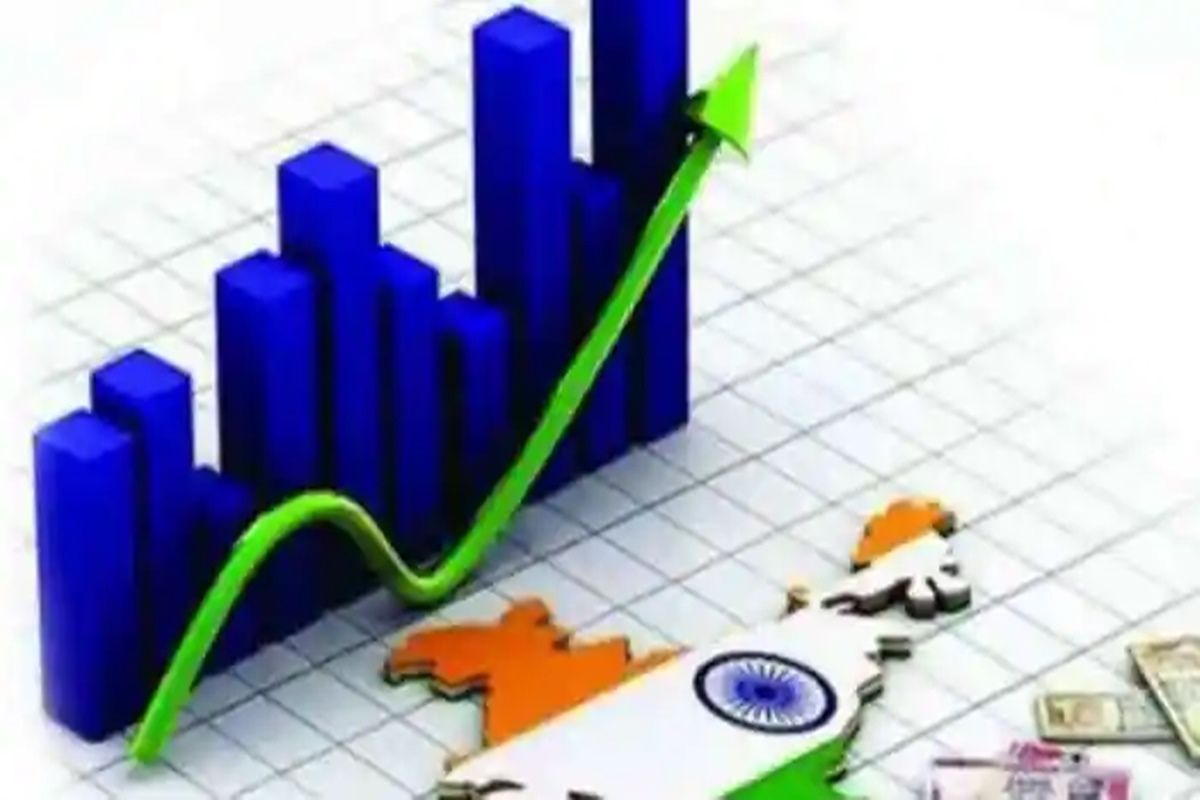According to Moody, India’s economy has a high growth potential, which supports its stable forecast for 2022

According to Moody, India’s economy has a high growth potential, which supports its stable forecast for 2022
According to a report from Moody’s on Tuesday, the effects of the Russia-Ukraine crisis, increased inflation in India and many places, and tightening financial conditions globally due to tightening policies are unlikely to impede India’s regarding the full from the epidemic in 2022 and 2023.
According to the announcement, Moody’s has maintained India’s sovereign rating at Baa3 with an investment grade. “The stable forecast reflects our belief that the risks resulting from unfavourable feedback between the financial sector and the economy are decreasing.

Banks and nonbank financial institutions (NBFIs) present significantly less danger to the sovereign than we previously thought because of their larger capital buffers and increased liquidity, which helps with the pandemic’s ongoing recovery.
It is anticipated that the economic situation will allow for a modest narrowing in the overall government public debt in the coming years, preventing further degradation in the national credit profile, even though risks resulting from a high debt load and inadequate debt affordability remain.
According to the press release, the rating agency may raise India’s rating if its economic growth potential exceeds its projections, supported by the successful implementation of financial and economic sector reforms that resulted in a significant and maintained increase in private sector investment.

The announcement went on to say that the credit profile would also be supported by the “practical deployment of fiscal policies that result in a sustained fall in the government debt load and improvement in debt affordability.”
Rising threats to the global economy, increased inflation, and tighter financial conditions are unlikely to derail India‘s economic growth, according to Moody’s Investors Service, which on Tuesday reaffirmed a set-up- for the country’s rating.
According to Moody’s, the Indian economy grew by 7.6% in the most recent fiscal year, down from 8.7% in the one that concluded on March 31. It predicts a 6.3% GDP increase for 2023–2024.

India has given the lowest investment-grade rating, Baa3. It changed the rating outlook from negative to stable in October last year. India’s extensive and diverse economy, with significant potential, a relatively strong international position, and a secure domestic funding base for public debt are some of the primary factors reflected in the country’s credit profile, according to a note from Moody.
The main issues with credit include the following:
- A low per capita income.
- Excessive general government debt.
- Difficult debt repayment.
- Ineffective government.
According to the report, “we do not expect rising challenges to the world economy, including the influence of the Russia-Ukraine armed confrontation, higher inflation, and toughening financial conditions on the back of tightening policy, to sidetrack India’s ongoing recovery from the flu epidemic in 2022 (FY2022-23) and 2023 (FY2023-24). According to it, the stable outlook reflects its belief that the risks posed by adverse feedback between the financial sector and the economy are decreasing.

We anticipate that the economic climate will allow for an incremental constriction in the general government public debt in the coming years, avoiding further deterioration. “With higher capital channels and greater liquidity, financial institutions and nonbank financial firms (NBFIs) pose far less risk to the sovereign than we initially expected, enabling the based on long – term from the pandemic.
According to Moody, the rating may be upgraded if Economic growth potential considerably exceeds forecasts, underpinned by the successful implementation of financial and economic sector reforms that resulted in a considerable and sustained increase in private investment.
The credit profile would also be supported by the actual integration of fiscal policies that led to a consistent decrease in the government’s public debt and improved debt affordability. The rating could be reduced, though, in the event of a worsening economic environment and a rise in financial sector risks.

The rating agency stated that slower growth than expected would increase the debt burden, which might further impair the sovereign’s fiscal health and result in an adverse rating action.
Moody’s Ratings agency changed India’s sovereign credit outlook from “negative” to “stable” on Tuesday while reiterating the nation’s foreign currency and long-term creditor ratings at Baa3. The agency did this by asserting that India’s downside risks from adverse feedback between the rest of the economy and the financial system are diminishing.
The sovereign rating of India was downgraded by Moody’s last year from “Baa2” to “Baa3,” the worst investment grade, citing difficulties in implementing measures to reduce the risks of an extended period of weak growth and worsening fiscal condition. The rating’s outlook remained unfavourable.

What caused the rating agency’s outlook to be upgraded?
Banks and nonbank economic organizations are substantially less risky to the country than Moody initially thought because of their more substantial capital buffers and increased liquidity.
Additionally, Moody anticipates that the economic climate will permit a sharp decrease in the overall government public debt over the coming years, preventing further worsening of the highest credit profile, even though risks associated with a high debt load and weak debt accessibility remain.
Over the past few years, bank provisioning has gradually made it possible to write off historical issue assets. Additionally, according to Moody, banks have improved their capital positions, suggesting a more favorable prognosis for expanding lending to support the economy.

What measures have been taken to make the banking system more secure?
Banks have collected Rs 5.01 lakh crore in bad loans over the last six fiscal years, enabling them to enhance their business results. Between 2017–18 and 2021–22, the government invested Rs 3.06 lakh crore in government institutions and implemented several measures to strengthen banks and enhance debt settlement and recovery.
The government granted a guarantee worth Rs 30,600 crore last month to be extended to the Nacional Infrastructure Finance Company Ltd (NARCL) to aid in the timely resolution of the banking sector’s stressed assets, which total about Rs 2 lakh crore.
What does Moody think about growth?
India’s real GDP is predicted to surpass the 2019 level this fiscal year and rebound to a rate of growth of 9.3%, followed by 7.9% in fiscal 2022, it added. This follows a severe 7.3% contraction in the fiscal year that ended in March 2021.

According to the research, Moody anticipates a medium-term GDP Growth rate to average about 6%. According to some analysts, there are enough mechanisms for a greater growth rate. Therefore Moody’s has undervalued India’s potential for real GDP growth in the longer run.
What effect will the upgrade have?
An upgrade typically helps to cut the cost of borrowing for the state and the corporates because foreign borrowing costs are linked to a country’s rating and the agencies’ perspective on the country. Foreign investors feel more secure investing in government and business bonds at reduced premiums since the likelihood of default is decreasing, and overall debt payment capacity is improving.
Edited by Prakriti Arora




